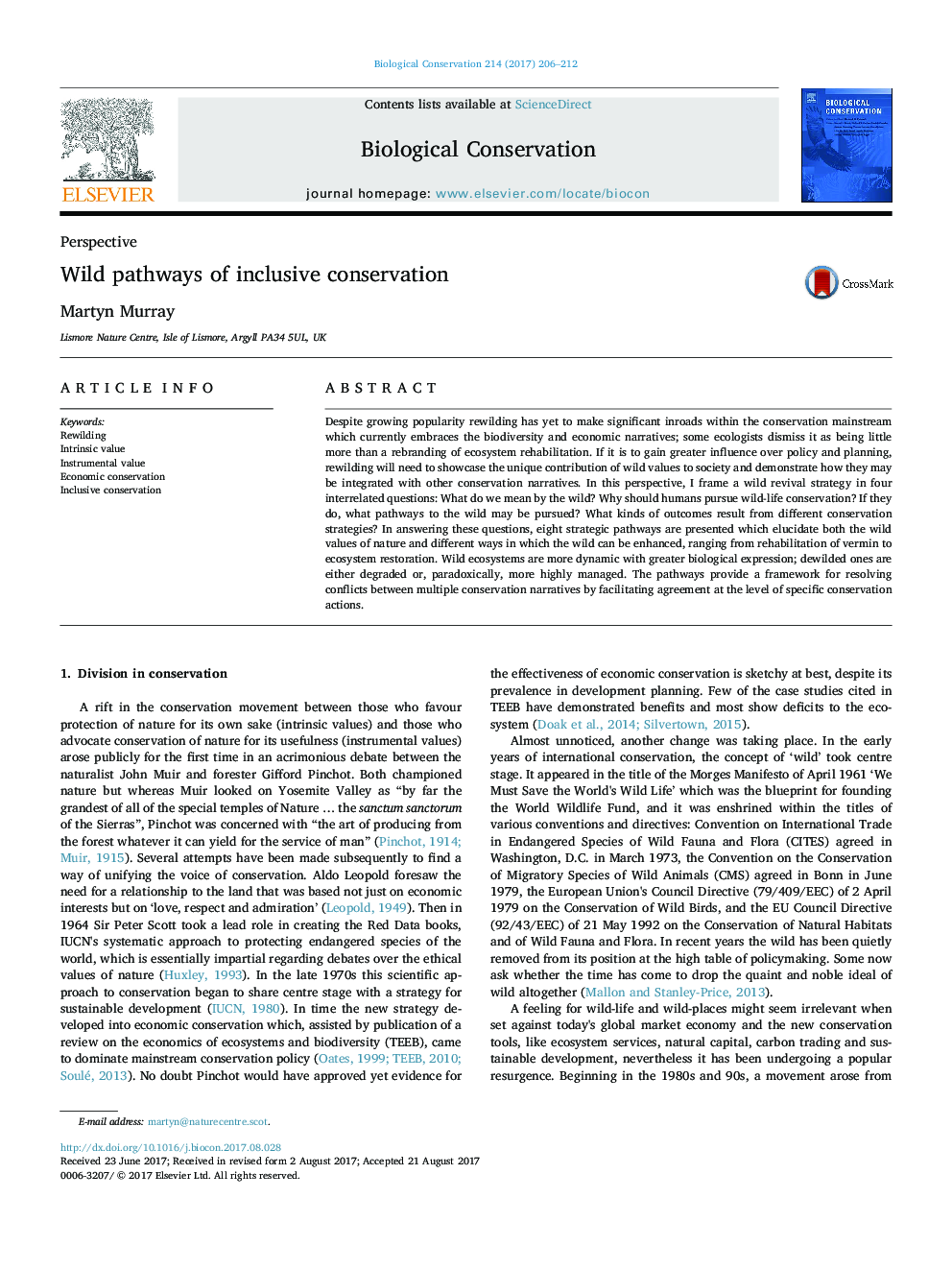| Article ID | Journal | Published Year | Pages | File Type |
|---|---|---|---|---|
| 5742928 | Biological Conservation | 2017 | 7 Pages |
Abstract
Despite growing popularity rewilding has yet to make significant inroads within the conservation mainstream which currently embraces the biodiversity and economic narratives; some ecologists dismiss it as being little more than a rebranding of ecosystem rehabilitation. If it is to gain greater influence over policy and planning, rewilding will need to showcase the unique contribution of wild values to society and demonstrate how they may be integrated with other conservation narratives. In this perspective, I frame a wild revival strategy in four interrelated questions: What do we mean by the wild? Why should humans pursue wild-life conservation? If they do, what pathways to the wild may be pursued? What kinds of outcomes result from different conservation strategies? In answering these questions, eight strategic pathways are presented which elucidate both the wild values of nature and different ways in which the wild can be enhanced, ranging from rehabilitation of vermin to ecosystem restoration. Wild ecosystems are more dynamic with greater biological expression; dewilded ones are either degraded or, paradoxically, more highly managed. The pathways provide a framework for resolving conflicts between multiple conservation narratives by facilitating agreement at the level of specific conservation actions.
Keywords
Related Topics
Life Sciences
Agricultural and Biological Sciences
Ecology, Evolution, Behavior and Systematics
Authors
Martyn Murray,
